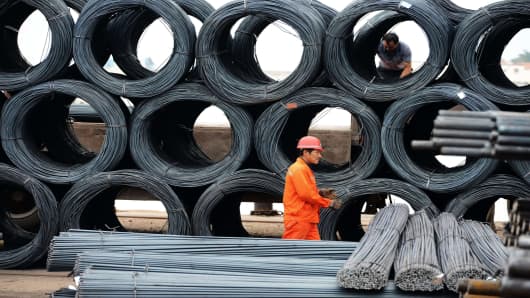The deflationary spiral in China's producer prices that has plagued factories in the mainland for 16 consecutive months highlights the weakening growth momentum in the world's second largest economy, said economists.
"It is worrying to see the Chinese producer price index remain in deflationary territory - it is the internal weakness in the Chinese economy that has been producing this deflationary pressure on the wholesale price level," Chi Lo, senior strategist, Greater China at BNP Paribas told CNBC on Tuesday.
The producer price index (PPI) dropped 2.7 percent in June from the year ago period, official data showed on Tuesday, compared to a fall of 2.9 percent in May. Producer prices in China have been declining since February 2012, weighed down by falling commodity prices, overcapacity and weakening demand.
(Read More: China Remains Stuck in Decline, Data Will Show)
China's consumer inflation, however, accelerated in June, driven by a rise in food prices.
China's consumer price index (CPI) rose 2.7 percent in June from a year earlier, slightly higher than a Reuters forecast of 2.5 percent, and compared to a 2.1 percent tick up in the previous month. However, June's reading is well under the central bank's 3.5 percent target for 2013.
"Food prices are going to be a wild card. The Chinese food supply issues as the middle class grows are critical. [But] it's not a worry yet," said Thomas Murphy, managing partner at Family Office Research & Management.
Despite inflationary pressures remaining contained, China watchers believe the likelihood of government stimulus remains low.





